Mamenchisaurus was a remarkable dinosaur whose very name evokes images of ancient landscapes and forgotten worlds. This majestic sauropod was found in modern day China. It thrived during the Late Jurassic Period, a time when the Earth was a very different place. Mamenchisaurus, with its distinctive long neck and herbivorous lifestyle, would have been a commanding presence in its environment, towering over other the fauna that shared its corner of this bygone Jurassic world.
Mamenchisaurus Key Facts
| Keyword | Fact |
|---|---|
| Pronunciation | mah-MEN-chee-SAW-ru |
| Meaning of name | Mamenchi Lizard |
| Group | Sauropoda |
| Type Species | Mamenchisaurus constructus |
| Diet | Herbivore |
| When it Lived | ~160 to (possibly) 114 MYA |
| Period | Late Jurassic to Early Cretaceous |
| Epoch | Oxfordian to the top of the Late/Upper Aptian |
| Length | 43.0 to 80.0 feet |
| Height | Approximately 26.0 feet |
| Weight | ~20+ tons |
| Mobility | Moved on all four |
| First Discovery | 1952 by construction workers |
| Described by | 1954 by C.C. Young |
| Holotype | IVPP V. 790 |
| Location of first find | Sichuan Province, China |
| Also found in | Thailand and Mongolia |
Mamenchisaurus Origins, Taxonomy and Timeline
The story of Mamenchisaurus, its naming and taxonomy, is as long as its neck albeit not nearly as straightforward. Discovered in the Sichuan Province of China in 1952. The holotype, IVPP V. 790, represented a fragmented yet significant collection of bones, including dorsal and caudal vertebrae, rib fragments, and parts of the hindlimb. Despite the absence of the skull, forelimbs, and pelvic girdle, this specimen was instrumental in establishing the genus Mamenchisaurus within the family of long-necked dinosaurs called Sauropoda.

The name Mamenchisaurus, a blend of Chinese Pinyin and Greek, was intended to honor the discovery site, Mǎmíngxī (‘horse-neighing brook’). However, due to a linguistic mix-up by the describer, Professor C. C. Young, it was mistakenly named after Mǎménxī (‘horse-gate brook’), thus giving it the meaning ‘Mamenchi Lizard’. This nomenclatural twist adds a unique layer to the sauropod’s identity, intertwining its scientific classification with a story of linguistic solecism. The type species, M. constructus, is a bit less convoluted, being named after the circumstances of its discovery – a construction site!
Timeline and Evolutionary Significance
Although the rock formations in which Mamenchisaurus is found have proven difficult to date, it is typically thought to be no older than the Oxfordian Stage of the Late Jurassic, around 159 million years ago. Recent radiometric dates have suggested that some mamenchisaurid-bearing rocks may date as recently as the Aptian Stage of the Early Cretaceous – around 114mya – suggesting the genus existed for over 50 million years!
Given its potential longevity, the Mamenchisaurus genus would have overseen a period of significant evolutionary, ecological, and geographic changes. The discovery of M. constructus and its subsequent classification have provided valuable insights into the sauropod lineage, highlighting the diversity and adaptability of these colossal creatures during a dynamic period in Earth’s history. The geological and temporal context of M. constructus not only enriches our understanding of this specific genus but also contributes to the broader narrative of sauropod evolution during the Late Jurassic.
Subspecies and Their Distinctive Features
Mamenchisaurus hochuanensis
In 1972, Mamenchisaurus family welcomed a new member, M. hochuanensis, described by Young and Zhao. Discovered near Hechuan, this species boasted an almost complete vertebral column. Initially it was the largest known sauropod in China. Its discovery near the M. constructus site in the Upper Shaximiao Formation further enriched the narrative of these Jurassic giants.
Mamenchisaurus sinocanadorum
M. sinocanadorum, discovered in 1987 in the Junggar Basin, Xinjiang, added an international dimension to Mamenchisaurus story. This species, unearthed by the China-Canada Dinosaur Project, was unique for its well-preserved skull and neck vertebrae. Despite its limited remains, M. sinocanadorum offered a new perspective on the diversity within the Mamenchisaurus genus, representing the largest species yet referred to it by a substantial margin.
Mamenchisaurus anyuensis
M. anyuensis, described in 1996, was another intriguing addition, discovered near Longchiaoxiang in the Sichuan Basin. Representing multiple individuals, this species provided a more comprehensive view of Mamenchisaurus anatomy, with its articulated skeleton and extensive forelimb fossils.
Mamenchisaurus youngi
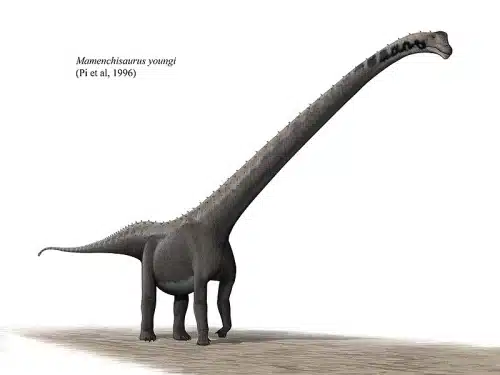
Named in honor of C. C. Young, M. youngi was described in 1996 from remains found near Zigong, Sichuan Province. Its nearly complete and articulated skeleton, including a rare skull, offered invaluable insights into the genus’ physical structure.
Mamenchisaurus jingyanensis
In 1998, M. jingyanensis was described, with fossils found near Jingyan County. This species, known for its relatively complete skull and limb bones, added further depth to our understanding of the Mamenchisaurus genus.
Other Mamenchisaurus Species and Material
Mamenchisaurus genus has seen various species come and go since its initial discovery. Having been regarded as something of a “waste-basket taxon” at various times. Some species have been transferred in and out of the genus, while others remain debated or undiagnosed. For instance, Zigongosaurus fuxiensis, initially named in 1976 and later considered part of Mamenchisaurus genus, exemplifies the ongoing discussions and reevaluations that occur within paleontological circles.
“Mamenchisaurus guangyuanensis,” though not formally described and thus a nomen nudum, represents another intriguing twist on the story. Known from several individuals of varying ages, this species, initially described as “Omeisaurus guangyuanensis,” shows characteristics aligning it more closely with Mamenchisaurus than Omeisaurus – a confusion that nonetheless underscores the close-relatedness (and possible endemism) of these iconic Chinese taxa.
The Mamenchisaurus genus, with its diverse species and complex taxonomic history, stands as a testament to the ever-evolving nature of paleontological research. Each species, from M. constructus to M. jingyanensis, contributes to a richer, more nuanced understanding of these magnificent creatures that once roamed our planet.
Mamenchisaurus Size and Description
Short Description of Mamenchisaurus
Species of Mamenchisaurus, while sharing quintessential sauropod traits like quadrupedalism, large bodies, small heads, and long tails, are most distinguished by their exceptionally long necks, often approaching half their total length. These dinosaurs had elongated, lightly constructed, and highly pneumatic cervical vertebrae. These pneumatic structures – called “diverticulae” – are invasive extensions of the pulmonary system. A similar arrangement is seen in birds, helping lighten the skeleton in aid of flight. It’s very possible that sauropods would not have been able to grow as massive as they did without this incredible adaptation! Mamanchisaurus’ shoulders were somewhat higher than their hips, a distinct posture among sauropods.
Size and Weight of Type- and Subspecies

M. constructus
M. constructus, the first discovered species, is estimated to be around 43.0 to 49.0 feet in length, weighing approximately 5.5 tons. Its neck, though not completely preserved, was estimated to be about 15.3 feet long.
M. hochuanensis
M. hochuanensis, one of the larger species, measured an impressive 69.0 to 72.0 feet in length, with a neck stretching about 31.0 feet. Initially estimated to weigh around 50.0 tons, later studies suggest a lower mass of 15.4 to 20.1 tons.
M. sinocanadorum
M. sinocanadorum, known from fragmentary remains, is suggested to have been a colossal species. Its cervical vertebrae, longer than those of M. hochuanensis, imply a total length of about 85.0 feet, with a neck possibly reaching up to 50.0 feet. One of the largest dinosaurs known, it might have weighed up to as much as 66.0 to 88.0 tons, although this is contentious.
M. anyuensis
M. anyuensis, similar in morphology to M. hochuanensis, was estimated to be around 69.0 feet long, with some estimates reaching up to 82.0 feet. Its weight is approximated at 28.0 tons.
M. youngi
M. youngi, one of the smaller species, was about 52.0 feet long with a 21-foot neck. Its weight was estimated using volumetric techniques at about 8.68 tons. The nearly complete skull of the holotype specimen provides detailed insights into its cranial structure.
M. jingyanensis
M. jingyanensis was estimated to be between 66.0 and 85.0 feet in length, with a weight of around 13.0 tons. The skull of this species was restored at about 22.0 inches in length.
Unique Physical Features
Mamenchisaurus species exhibited forked chevrons starting around the middle of the tail, similar to those in Diplodocids. These chevrons, bony struts that extended along the base of the tail like the tread of some sinewy tire, curved strongly backward. Some researchers have suggested that the unique form of the chevrons in Mamenchisaurus represent adaptations linked to rearing, helping better distribute weight along the tail while utilizing it as an additional support structure.
A specimen possibly referable to M. hochuanensis, ZDM0126, showed four fused caudal vertebrae near the tail’s tip, resembling a tail club. This feature might have served as a sensory organ or a limited defensive weapon.The neck posture of Mamenchisaurus has been a subject of debate. Studies suggest that M. youngi’s neck was nearly straight with varying flexibility across different regions, indicating a feeding strategy focused on mid to lower-level vegetation. The overlapping cervical ribs may have limited neck flexibility, suggesting a mostly straight neck posture in life. In fact, the extraordinarily long neck of Mamenchisaurus might represent an extreme example of the sauropod “feeding envelope” – in which the neck was used in a broad sweeping fashion to gather resources while the feet remained mostly stationary, an effective energy-saving adaptation.
The Ultimate Dino Quiz
Do you want to test your knowledge on dinosaurs? Then try this Ultimate Dino Quiz! Don’t worry if you get some of the answers wrong, and look at it as an opportunity to refresh and improve your knowledge!
Don’t forget to try our other games as well!
Mamenchisaurus in its Natural Habitat
Imagine the world of Mamenchisaurus, a landscape dominated by lush vegetation and diverse ecosystems. This herbivore thrived in a habitat rich in flora, feeding on the abundant plant life of the Late Jurassic. The climate during this era was warmer and more humid than today, supporting a wide variety of plant species. Mamenchisaurus, with its long neck and towering stature, was well-suited to this environment, browsing on higher vegetation that other herbivores couldn’t reach.
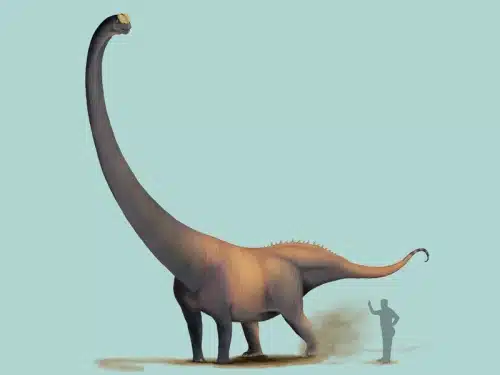
In terms of social behavior, while much remains unknown, it’s plausible that Mamenchisaurus lived in groups or herds. This social structure would have provided protection against predators and facilitated mating and rearing of young. The impact of such a large herbivore on its environment was likely significant, with Mamenchisaurus playing a key role in shaping the landscape and ecosystem of its time.
Contemporary Dinosaurs
In the ancient world where Mamenchisaurus lumbered, Omeisaurus, another long-necked herbivore, shared the stage. Though slightly smaller than Mamenchisaurus, Omeisaurus was no less majestic. The two might have been seen as peaceful co-inhabitants. Possibly occasionally crossing paths in a serene, leafy world where there was enough green bounty for both.
However, not all was tranquil in this prehistoric paradise. Enter Yangchuanosaurus, a fearsome predator, roughly the same size as the well-known and closely-related American taxon Allosaurus. This carnivorous beast, with its powerful jaws and sharp claws, likely saw Mamenchisaurus not as a neighbor, but as a potential meal. The interactions between these two would have been a spectacular display of nature’s raw power – the massive herbivore using its size and strength to fend off the agile and ferocious Yangchuanosaurus.
In this ancient ecosystem, Huayangosaurus played a unique role. Smaller than Mamenchisaurus, this stegosaurian dinosaur was armored with plates and spikes, a stark contrast to the gentle giant. While Mamenchisaurus peacefully grazed, Huayangosaurus might have been more cautious, its defenses a testament to the dangers posed by predators like Yangchuanosaurus. The presence of Huayangosaurus added a layer of complexity to the ecosystem, showcasing the diverse adaptations of these prehistoric creatures.
Agilisaurus, on the other hand, was a diminutive player in this ancient game of survival. Much smaller than Mamenchisaurus, this little dinosaur might have scurried underfoot. A mere spectator to the colossal interactions between the giants of its time. However, tts presence paints a picture of a diverse and bustling prehistoric world. Size ranged dramatically, and every creature, big or small, played a role in the intricate tapestry of life that surrounded the magnificent Mamenchisaurus.
Frequently Asked Questions
Mamenchisaurus was a herbivore, feeding primarily on the abundant plant life of the Late Jurassic Period.
This dinosaur was first discovered in 1952 in Sichuan Province, China, by construction workers.
The name translates from Chinese and Greek as “Mamenchi Lizard,” reflecting its discovery location and reptilian nature.
Mamenchisaurus lived during the Late Jurassic to Early Cretaceous Periods, approximately 168.3 to 112.03 million years ago.
Its extraordinarily long neck, robust limbs, and large body size are among its most notable features.
Sources
The information in this article is based on various sources, drawing on scientific research, fossil evidence, and expert analysis. The aim is to provide a comprehensive and accurate overview of Mamenchisaurus.
- https://www.gspauldino.com/Titanomass.pdf
- https://www.tandfonline.com/doi/full/10.1080/14772019.2023.2171818
- https://bioone.org/journals/annals-of-carnegie-museum/volume-85/issue-4/007.085.0403/Determining-the-Largest-Known-Land-Animal–A-Critical-Comparison/10.2992/007.085.0403.short
- https://discovery.ucl.ac.uk/id/eprint/10101710/1/Mooreetal2020%28Klamelisaurus%20green%20OA%29.pdf
Gallery
- Photo of skeleton of Mamenchisaurus jingyanesi from the Beijing Museum on view at the Miami Museum of Science
- Mamenchisaurus hochuanensis skull and neck mounted at the Paleozoological Museum of China in Beijing.
- Mamenchisaurus hochuanensis, Field Museum, Chicago, Illinois.
- Mounted skeleton of M. sinocanadorum, Japan
- Mamenchisaurus hochuanensis
- Mamenchisaurus at Tianjin Natural History Museum
- Mamenchisaurus hochuanensis. Sauropode, Chine.
- Fossil exhibit in the Kunming Natural History Museum of Zoology (昆明动物博物馆), Kunming, Yunnan, China.
- Mamenchisaurus Los Angeles, Natural History Museum
- Mamenchisaurus hochuanensis Young & Zhao, 1972 sauropod dinosaur from the Jurassic of China
- Fujian Natural History Museum, Fuzhou, Fujian, China.
- Mamenchisaurus jingyanensis skeleton mounted at BMNH
- Changji Dinosaur Museum Mamenchisaurus from China and Canada
- Changji Dinosaur Museum Mamenchisaurus from China and Canada
Article last fact-checked: Joey Arboleda, 01-05-2024
Featured Image Credit: UnexpectedDinoLesson, CC BY-SA 4.0, via Wikimedia Commons

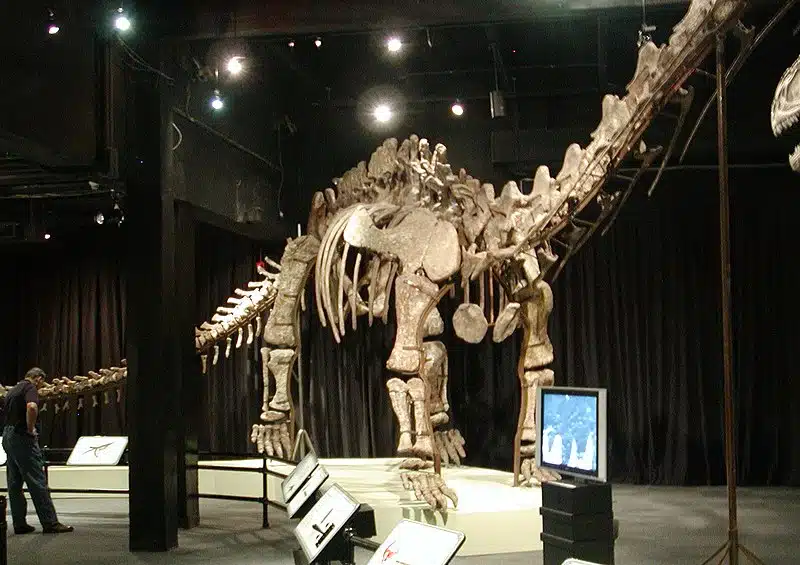
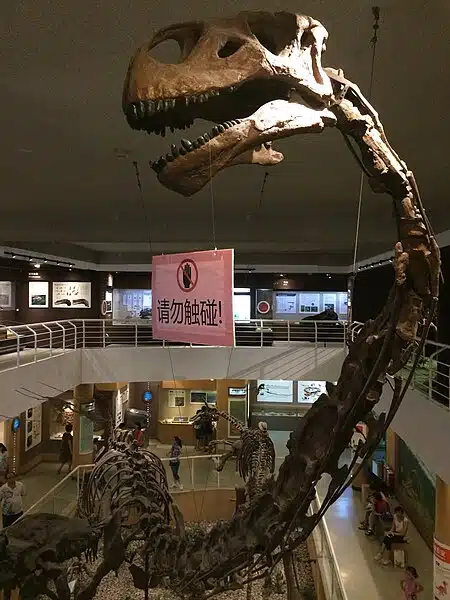
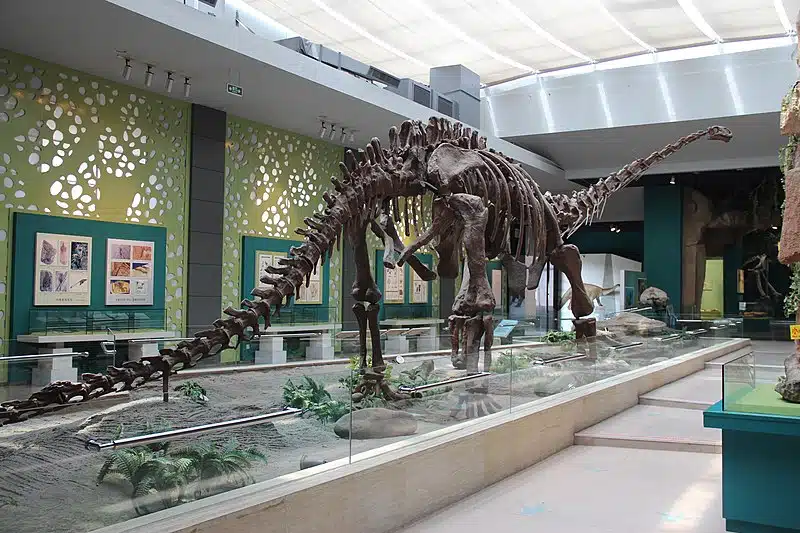
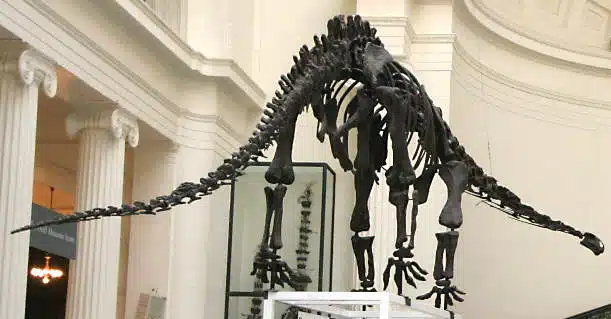
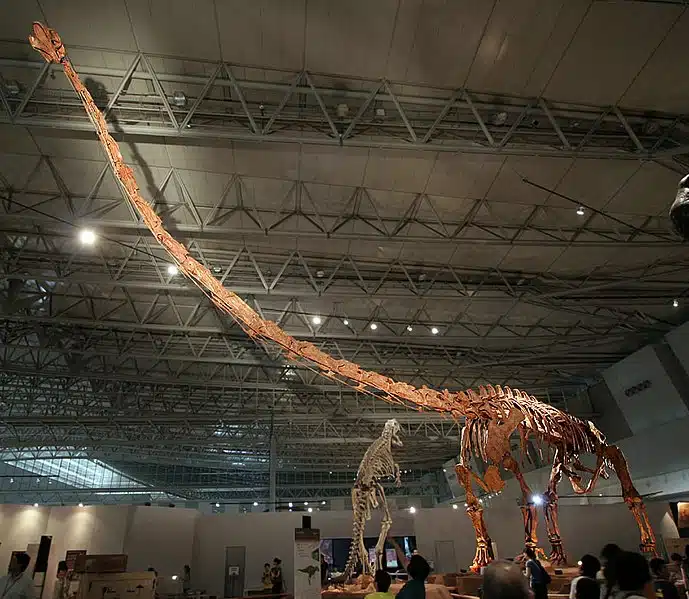
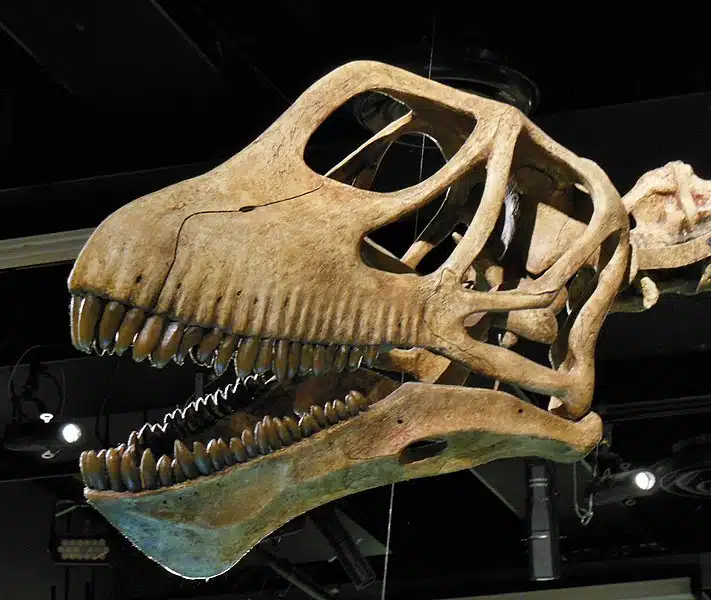




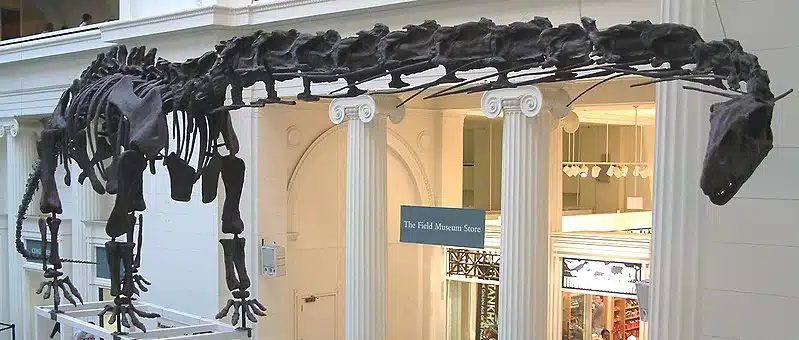
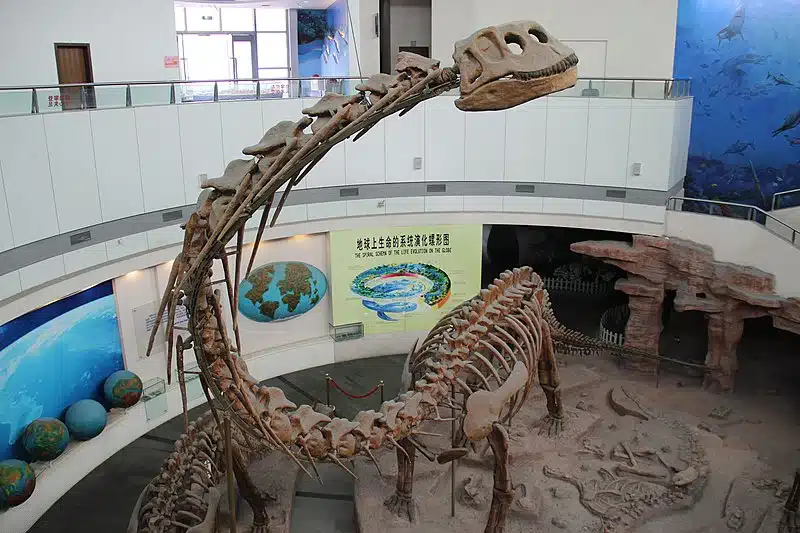
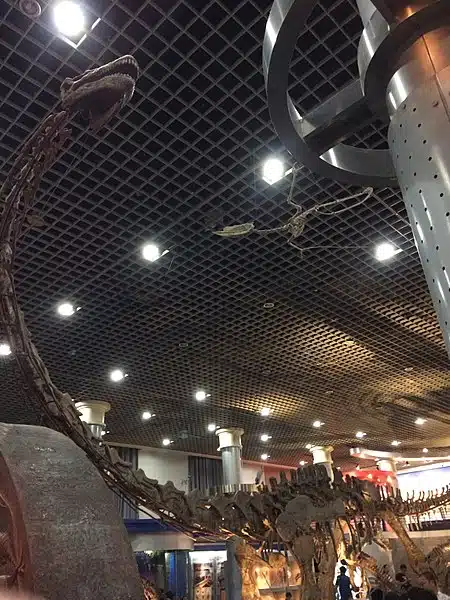
.jpg.webp)
颈椎(2).jpg)